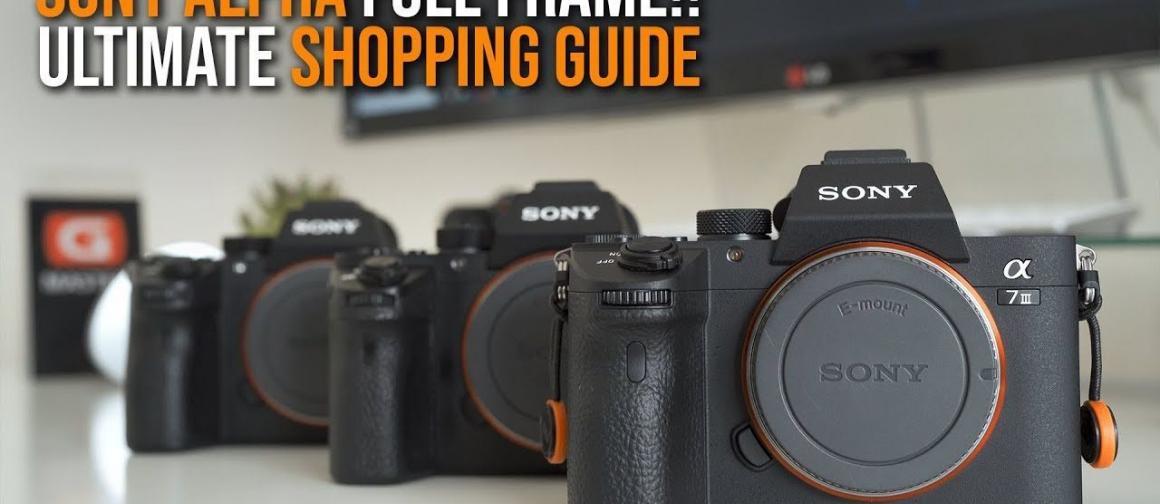

There’s even a constant Bluetooth connection feature in the A7 IV, which would allow you to transfer and post photos to social media using your smartphone with ease.A1, 1/2500s, f/6.3, ISO 8000 – FE 200-600mm G Sony A1 highlights: There is also a quick Photo/Video/S&Q switch sitting underneath the shooting mode dial for quick toggling between photo and video modes using your right thumb.įor content creators, the fully-articulated touchscreen display will be warmly welcomed as it allows them to vlog easily. This dial can be set to shutter speed, ISO, aperture, or focus mode depending on your usage pattern. An unmarked lockable dial replaces it at the same location on the A7 IV. The exposure compensation dial at the right shoulder of the A7 III is gone. All dials and buttons are strategically placed to be within reach of your right index finger and thumb for minimised search for buttons. The button layout continues to be superb, as you might expect from the A7 series. Plus, the rear mini-joystick has been improved for better control. Its rubberised grip feels deeper and more ergonomic, enabling a better grasp of the camera. While you might not even feel it when you hold the camera, it is a wee bit bigger and heavier than the A7 III, and its sturdy magnesium-alloy body gives plenty of confidence when the camera is in your hands. The design is similar to its predecessor, with some quality-of-life improvements. For wildlife and pet photography lovers, you will be happy to know that the Eye AF now supports tracking cats, dogs and birds. Not to mention, the A7 IV now has Eye AF built into its main AF system instead of being a dedicated mode in its predecessor. In addition, the A7 IV now has a more capable 759 phase-detection AF points (up from the A7 III’s 693) and 425 contrast-detection AF points (same as the A7 III) that cover 94% of the frame (just slightly up from the A7 III’s 93%).

The A7 IV has dual memory card slots with one SD UHS-II and another CFexpress Type A. It also supports 4K UHD video recording at 30fps in 10-bit 4:2:2 colour depth direct to an inserted memory card. Similar to the A7 III, the camera supports up to 10 frames per second (fps) shooting with autofocusing (AF)/ auto exposure (AE) tracking. The A7 IV now features a 3.69-million-dot OLED electronic viewfinder and a fully-articulated rear 1.03-million-dot touchscreen display for framing your photos. The Sony A7 IV is also equipped with a 5-axis in-body image stabilisation (IBIS), which offers up to 5.5 stops of correction (slightly up from 5 stops in the A7 III), which is yet another trait borrowed from the flagship Alpha 1. It's also using a newer processor that's first featured on Sony's flagship Alpha 1, which is newer than what's on the A7R IV and certainly the A7 III. The newer A7 IV isn't out to chase that segment and offers its upsides with more manageable file sizes with the upgraded 33MP sensor over the 24MP sensor on its predecessor (A7 III).


While it won't top the resolution offered by the A7R IV with its mind-boggling 61MP back-illuminated Exmor R CMOS image sensor, the A7R IV is specifically catered to those in the industry who need to work with extra high resolution images. The A7 IV packs a 33-megapixel backside-illuminated CMOS full-fame image sensor with Sony’s latest Bionz XR image processor. Launched late last year at the height of our Tech Awards 2022 Editor's Choice testing phase, now that the results are all rolled out, it's an opportune time for us to test drive Sony's latest full-frame camera. What does Sony's new A7 IV have to offer?Īs its name implies, the Sony A7 IV is the successor to the Japanese tech giant’s popular A7 III camera launched in 2018. Note: This review was first published on 21 April 2022.


 0 kommentar(er)
0 kommentar(er)
